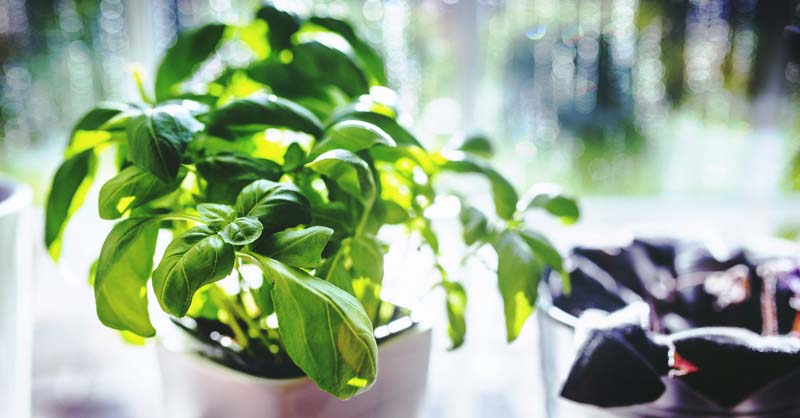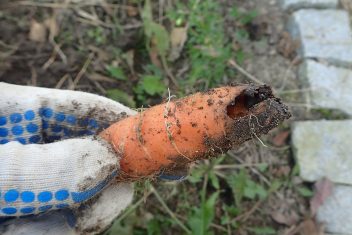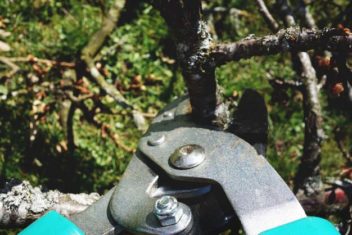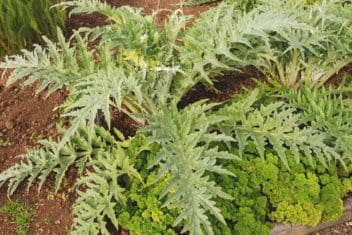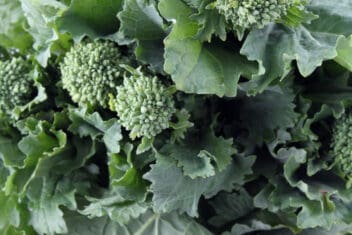Do you grow basil in your herb garden? If you care for your basil correctly, you’ll probably end up with more than you can use while it’s fresh.
What do you do with it when you have too much? You can dry your basil with no trouble.
However, some people prefer to freeze it. There are multiple methods, and it’s a convenient option to ensure you have basil available for when it is needed.
So if you are interested in knowing how to harvest and freeze your basil properly, here’s what you need to know:
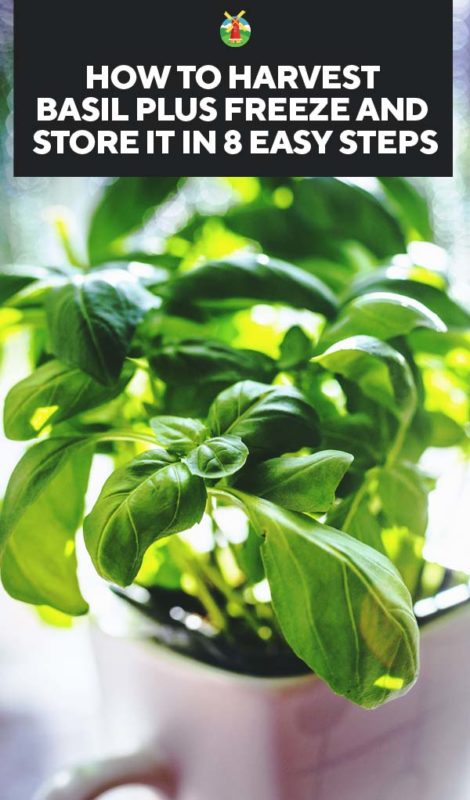
How to Harvest Basil
Harvesting basil correctly is an important step to growing it. It’s important to harvest basil continuously because it encourages the plant to produce more.
If you aren’t getting that much basil, it’s probably because you aren’t harvesting (or pruning) enough to encourage new growth.
Here’s how you properly harvest basil:
1. Harvest in Small Amounts
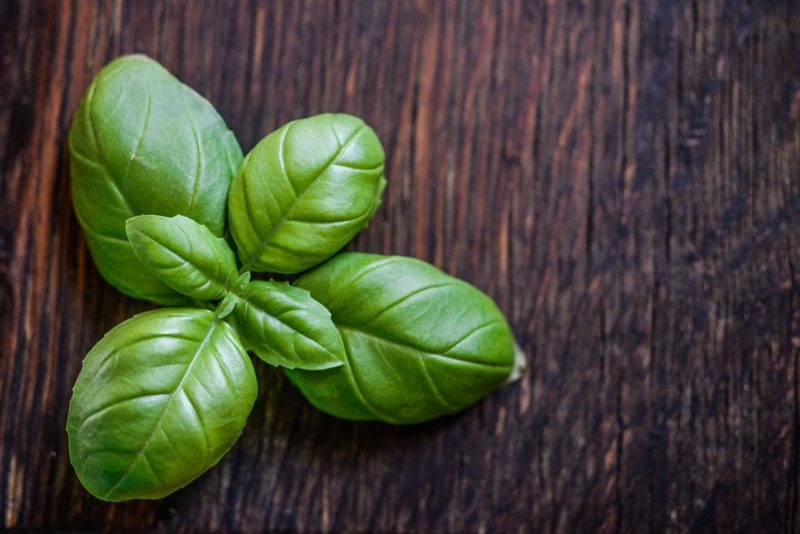
Harvesting basil in small amounts is easy. When you’re cooking and decide basil would go great with your recipe, you pluck the basil leaves you want.
Keep in mind; you don’t cut whole stems from the plant when harvesting small amounts. It’s also a good idea when collecting small amounts, to snip the ends of branches on the plant as you pick.
By snipping the ends of stems, it encourages fuller growth. Your basil plants should begin to grow wider instead of vertical.
Also, if you see any flowers or buds on the basil, snip the buds off. This will let the plant reset its internal clock and act as though it’s younger. Therefore, it’ll stop trying to produce seed and produce more basil leaves.
2. Harvest in Large Amounts
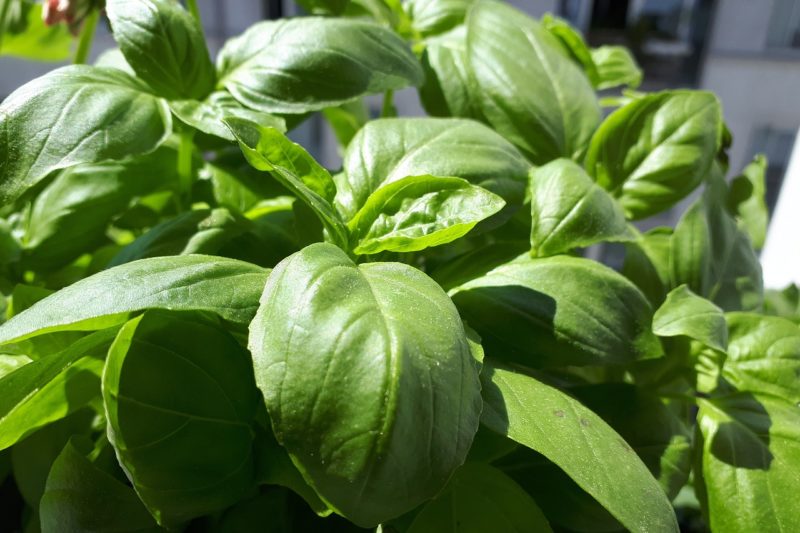
You should prune your basil plants regularly. Pruning will keep the plant from bolting. Also, the more frequently you prune and harvest, the younger the leaves are you’re collecting.
Younger leaves have a better flavor and are more tender. A general rule is for every five stems of leaves, begin at the second level of leaves, and cut from there up.
When harvesting more copious amounts of basil, harvest from the top of the plant downward. It’s normal to cut one-third of the plant down as you harvest.
Don’t worry when you see how much of the plant you’ve cut off. It will grow back and be ready to harvest again in approximately 2-3 weeks.
3. Harvest at the End of the Grow Season
Basil plants are annuals. Therefore, you must replant them every year because they don’t overwinter well.
With this in mind, before the first frost in fall, harvest the entire plant. Cut every stem from the plant off until you’ve reached the ground.
Once all stems have been removed, it’s time to remove the leaves from the stems. When the stems are empty, toss them to your compost pile.
The leaves can be used to cook with or to preserve for later use.
8 Methods to Freezing Basil
Freezing basil is an excellent method because it’s so easy. I’m going to share 8 different ways with you on how to preserve basil, and you pick the process which will work best for you. Here are the methods for freezing basil:
1. Flash Freeze
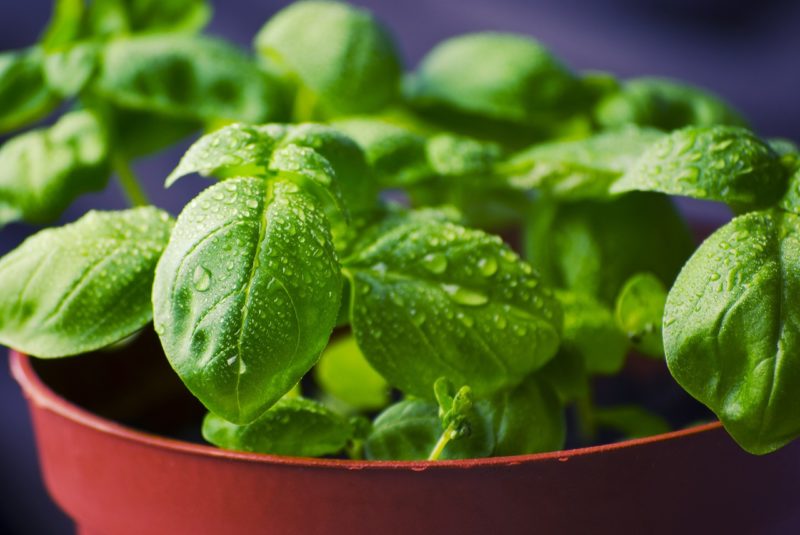
Flash freezing is a simple method of freezing basil because it has few steps and takes little effort. You’ll begin the process by washing the basil leaves with cold water.
Be sure to dry the leaves thoroughly. It’s best if you use a salad spinner to pull the water out of them.
When the leaves are dry, place them on a cookie sheet in a single layer. Place them in your freezer for 24 hours. They should be frozen through when removed.
After the 24 hours, remove the leaves from the freezer and place the basil in a freezer bag for long-term storage.
2. Inside a Paper Towel
For our next method, you’ll begin by washing the basil leaves in cold water. Dry the basil leaves thoroughly before moving on in the process.
When the leaves are dry, place a single layer of leaves on a paper towel. You’ll roll the paper towel up with the basil leaves inside. The paper towel will absorb any moisture the basil leaves may have.
Place the paper towel with the basil leaves in the freezer bag. Be sure to remove as much air as possible before placing it in the freezer.
3. Whole
Preserving basil leaves whole is an easy method because it requires little to no preparation. You’ll begin the process by putting water in a pot and placing it on your stove to boil.
While waiting for the water to boil, wash and dry the basil leaves. Place the basil leaves in a strainer or have a skimmer slotted spoon on hand.
Next, prepare an ice bath. You’ll need a large bowl filled with ice and cold water. When you have everything in place, it’s time to get to work.
This process must move quickly which is why it’s important to be set up before starting. Place the basil in the boiling water for 2-5 seconds.
Pull the basil from the water and place it in the ice bath to cool for a minute or two. When the basil has fully cooled, dry the leaves thoroughly.
Finally, place the basil in a freezer bag or container layered with parchment paper. It’s essential to set a layer of parchment paper between each layer of basil to keep it from becoming a frozen clump.
Be sure to store the basil flat in the freezer. If you’re concerned that the basil will still freeze in a clump, prior to freezing in a bag, place the basil on a cookie sheet and flash freeze it for 24 hours.
From there, place the basil in a freezer bag layered with parchment paper and store flat.
4. In a Mason Jar
Begin this method by washing and drying the basil leaves thoroughly. Roughly chop the basil to make it smaller and feasible to fit in a 4oz jar.
Toss the coarsely chopped basil in olive oil. For every 1 cup of basil, toss 1 tablespoon of olive into the bowl.
When the basil is coated in oil, you’re ready to prepare the containers. Line jelly sized mason jars with parchment paper.
Add basil to the jars and place the lid on. Place the jars in the freezer. It’s essential to line the jars with parchment paper to make it easier to remove the basil when you’re ready to use it.
5. Unblanched
For this method, begin by washing and drying the basil leaves. Place a layer of parchment paper inside a freezer bag. Place the basil leaves in the bag.
Add layers of parchment paper as needed to separate the basil leaves. Remove excess air from the bag and store the bag flat to keep the basil from sticking together in the freezer.
6. Pureed
This process requires a puree to be made. You’ll begin by removing all basil leaves from the stems. Wash and dry the leaves.
Place the basil in a food processor and mix 1 tablespoon of olive oil in the food processor for every 1 cup of basil.
When the puree is complete, place exact amounts in ice cube trays. Allow the puree to freeze in the trays.
Once the puree is frozen, pop it out of the ice cube trays and into a freezer bag to be stored.
7. Food Saver
If you’re tired of pressing on freezer bags hoping you’ll get enough air out, this method could be for you. Follow any of the above techniques you prefer which end in the basil being placed in a freezer bag.
However, instead of placing the basil in a freezer bag, put it in a Food Saver bag. Place the bag in the Food Saver to have the air sucked from it.
This should help ensure freezer burn doesn’t work its way into your basil because some air was accidentally left in the bag.
8. Freeze in Ice Trays
Our final method for preserving basil in the freezer is to use ice cube trays. Begin this method by washing and drying the basil leaves.
From there, slice the leaves coarsely. They need to be small enough so they can fit in an ice cube tray.
When this is complete, divide the basil out into the ice cube trays. Pour vegetable broth, bone stock, chicken broth, any other broth favorite, or water over the basil.
If you have ice cube trays with covers, place the lid over the tray and freeze. If your trays don’t have covers, freeze the basil.
When the basil is frozen, pop the basil out of the trays and store in a freezer bag for long-term storage.
Well, you now know how to harvest your basil at each stage of its growth, and you also know of 8 different methods for freezing your basil for long-term storage.
Hopefully, this will allow you to enjoy your basil throughout the year and also boost your basil harvest.
